#EngineControlUnit
Text
Introduction to Robot operating system
November 28, 2023
by dorleco
with no comment
Autonomous Vehicle Technology
Edit

Introduction
The open-source middleware system known as the Robot Operating System, or ROS for short, is used to create robotic software. It offers a collection of tools and frameworks that make it easier to create sophisticated and reliable robot applications. Open Robotics is currently responsible for maintaining ROS, which was first created by Willow Garage, a robotics research group.
Key features of ROS include:
Middleware Communication: ROS enables communication between various robotic system components. It facilitates information flow between nodes (separate software processes) using a publish/subscribe messaging system. In order to coordinate different operations inside a robotic system, communication is essential.
Package Management: Resources such as libraries, executables, configuration files, and other files are arranged into packages by ROS. This modular design streamlines the development process and encourages code reuse.
Hardware Abstraction: ROS gives programmers the ability to build code that is not dependent on the particular hardware platform by providing hardware abstraction. The creation of scalable and portable robotic applications is made possible by this abstraction layer.
Device Drivers: ROS comes with a number of device drivers for different robotic platforms, actuators, and sensors. The incorporation of additional devices into a robotic system is made easier by this pre-built support for standard hardware components.

Tools for Visualization: Robotic system monitoring, debugging, and visualization are all included in ROS. Tools that assist developers in comprehending and troubleshooting the behavior of their robots include the simulator Gazebo, the RQT graphical user interface, and the 3D visualization tool RViz.
Community Support: The lively and engaged community of ROS is one of its strongest points. Around the world, developers build and share packages, guides, and best practices as part of the ROS ecosystem. This cooperative setting encourages creativity and speeds up the creation of robotic applications.
Flexibility & Extensibility: ROS is made to be both extendable and adaptable, enabling developers to alter and expand its features to suit their own requirements. Because of its adaptability, ROS may be used for a variety of robotic applications, ranging from commercial goods to research prototypes.
Programming Languages Supported: C++, Python, and Lisp are just a few of the languages that ROS supports. Because of this flexibility, developers can utilize their most familiar language for different parts of their robotic applications.
Benefits of Robot operating system
Numerous advantages provided by the Robot Operating System (ROS) contribute to its acceptance and popularity in the robotics industry. The following are some main benefits of using ROS:
Community-driven and Open Source: ROS is an open-source framework, which permits unrestricted modification and redistribution of its source code. Within the international robotics community, cooperation and knowledge exchange are encouraged by ROS’s open nature. Its development is supported by developers all over the world, creating a rich ecosystem of resources, libraries, and packages.
Modularity and Reusability: The architecture of ROS is modular, with robotic software arranged into packages. Because of its modular design, which encourages code reuse, developers can more easily utilize pre-existing components to create new robotic applications. This quickens the development process and raises the software’s general quality.
Middleware for Communication: ROS offers a communication middleware that facilitates easy communication between various robotic system components. By using a publish/subscribe approach, this middleware facilitates easy information sharing between nodes. The coordination of several sensors, actuators, and algorithms within a robot is contingent upon this communication method.
Hardware Abstraction: ROS enables developers to write code that is not dependent on the particular hardware platform by abstracting the hardware layer. By offering a standardized interface for dealing with sensors, actuators, and other hardware components, this abstraction streamlines the development process. Additionally, it improves portability, which facilitates the adaptation of robotic software to various hardware setups.

Rich Set of Tools: Robot Development, Debugging, and Monitoring are made easier with the many tools that ROS provides. Robot behavior is better understood by developers because of visualization tools like RViz, debugging tools like RQT, and simulators like Gazebo, which facilitate the analysis and optimization of applications.
Device Drivers: For typical sensors and actuators, ROS comes with a large selection of pre-built device drivers. Developers can save time and effort by using this collection of drivers to make the integration of new hardware into robotic systems simpler.
Scalability: Because of its scalable nature, ROS can be used for a variety of robotic applications, ranging from small-scale research prototypes to massive industrial robots. Because ROS is modular and versatile, developers can expand their applications according to the requirements and complexity of the robotic system.
Support for Several Programming Languages: C++, Python, and Lisp are just a few of the languages that ROS supports. This language flexibility enables the integration of existing codebases written in many languages and accommodates developers with varying language preferences.
Simulation Capabilities: Before implementing ROS on real robots, developers can test and validate their robotic algorithms in a simulated environment thanks to its good integration with simulators such as Gazebo. Error risk is decreased with simulation, which can also expedite development.
Educational Resource: ROS is a great educational tool that lets hobbyists, researchers, and students learn about and work with robotics. Both novice and seasoned developers can use ROS because of its wealth of tutorials, documentation, and friendly community.
Drawbacks of Robot operating system
The Robot Operating System (ROS) has many benefits, but users may also run across some issues and problems with it. When thinking about using ROS for a specific robotic application, it’s critical to be aware of these constraints. The following are a few disadvantages of ROS:
Learning Curve: For those new to robotics and software development, in particular, ROS has a steep learning curve. Users may require some time to become skilled in comprehending and utilizing the different components and concepts inside ROS due to the system’s overwhelming complexity.
Resource-Intensive: ROS has the potential to be a resource-intensive program, using a large amount of RAM and computing power. Applications using limited resources, like lightweight robots or tiny embedded devices, may find this concerning.
Performance in Real Time: The original architecture of ROS did not consider real-time applications. Despite recent improvements to real-time capabilities, ROS might not be appropriate for applications like high-speed control systems that demand incredibly low latency responses.
Absence of Standardization: Although commonly utilized, ROS is not strictly standardized in some sectors. Similar functionality may be implemented slightly differently by different developers, which could cause compatibility problems when merging packages from multiple sources.
Security Issues: Because ROS is an open-source framework, security issues could arise. When using ROS in environments where security is a major concern, like robotics applications in the medical or defense industries, users must exercise caution.
Limited Industry Adoption: Although ROS is widely used in academia and research, its uptake in some companies, especially those with safety-critical applications, may be restricted. Industries with strict safety regulations could need more procedures for validation and verification.
Not Suitable for All Robotic Systems: Not every kind of robotic system is a good fit for ROS. For instance, the full potential of ROS may not be greatly beneficial for specialized or simple robots with low processing requirements, adding needless complexity.
Dependency Management: As the number of packages and their versions rises, it might be difficult to maintain dependencies across various ROS packages. Integration problems may arise from package version incompatibilities.
Limited Real-world Deployment Tools: Although ROS offers great simulation tools such as Gazebo, there could be difficulties when moving from simulation to real-world deployment. It might be challenging to create sturdy, dependable robotic systems that function flawlessly in the real world.

Continuous Evolution: The frequent release of new updates and versions of ROS may make it more difficult to sustain and maintain current robotic systems over the long run. There may be compatibility problems between various ROS versions.
Conclusion:
In conclusion, the Robot Operating System (ROS) stands as a powerful and versatile framework that has significantly contributed to the advancement of robotics research, development, and deployment. Its open-source nature, modular architecture, and extensive set of tools have propelled ROS into the forefront of the robotics community.
ROS has been instrumental in fostering collaboration and knowledge-sharing among developers, leading to a vibrant ecosystem of packages and libraries. The benefits of modularity and reusability have allowed for the creation of complex robotic systems with greater ease and efficiency. The middleware communication system enables seamless interaction between various components, contributing to the coordination of sensors, actuators, and algorithms within robots.
Despite its strengths, ROS does come with certain drawbacks, including a steep learning curve, resource intensity, and challenges in real-time applications. However, these limitations need to be weighed against the benefits, and developers must carefully consider the specific requirements of their projects.
In essence, ROS has played a pivotal role in democratizing robotics, providing a platform for both researchers and industry professionals to experiment, collaborate, and innovate. As technology continues to evolve, ROS is likely to adapt and remain a key player in shaping the future of robotics. Its impact on education, research, and industry applications underscores its significance in the broader landscape of robotic systems development.
#Robotoperatingsystem#Transmissioncontrol#Dorleco#EngineControlUnit#FuelEfficiency#InternalCombustionEngine#BatteryManagement#autonomousvehicles
0 notes
Photo

Magic MotorSport Flex sigue evolucionando ✅ Otra cosita mas hecha 💪🏻 Isuzu Transtron Ecu ahora soportado ℹ️ #magicmotorsport #magicmotorsportflex #flexbox #isuzu #ecu #tcu #transtron #enginecontrol #enginecontrolunit #tuning #chiptuning #chiptune #hecho #trabajo #work #monday #loslunesalsol #mondaystyle #mondaysatheaven #cool #instatech #best #top #poniedzialek #polishboy #praca #elektronika #electronics #taller #workshop (en Autoelectrónica MD) https://www.instagram.com/p/ChAJtJJDIr7/?igshid=NGJjMDIxMWI=
#magicmotorsport#magicmotorsportflex#flexbox#isuzu#ecu#tcu#transtron#enginecontrol#enginecontrolunit#tuning#chiptuning#chiptune#hecho#trabajo#work#monday#loslunesalsol#mondaystyle#mondaysatheaven#cool#instatech#best#top#poniedzialek#polishboy#praca#elektronika#electronics#taller#workshop
0 notes
Photo

ECM replacement on CAT Engine ! Our diesel mechanics are experts at repairing CAT diesel engines. Truck got towed in, due to a bad ECM on a CAT engine which stopped working. The customer was on a budget, so we looked for a used ECU / ECM or on-board computer that we could reprogram. The image here depicts one of two plugs that this 3406E CAT diesel engine uses to connect to the ECM. Our diesel mechanics have over twenty years of experience repairing CAT diesel truck engines. Experience professionalism at its peak and workmanship at it's best ! For further queries call Gabby @ (956) 783 - 8991 or visit - https://www.us281trucktrailerservices.com/services/diesel-mechanic-edinburg-texas.html #us281family #us281CAT #enginecontrol #enginecontrolunit #enginecontrolmodules #ecmreplacement #truckecm #catengine #catengines #catdiesel #catdieselengine #catdieselpower #catdieselmechanic #truckdiagnostics #3406 #3406e #3406cat #3406ecat #truck #trucks #truckrepair #trailer #trailers #trailerrepair #trucking #americantrucks #southtexas #texas #southtexastrucking #texastruckers (at US 281 Truck & Trailer Services LLC) https://www.instagram.com/p/CANYENZp93t/?igshid=17l2s8lcaylg8
#us281family#us281cat#enginecontrol#enginecontrolunit#enginecontrolmodules#ecmreplacement#truckecm#catengine#catengines#catdiesel#catdieselengine#catdieselpower#catdieselmechanic#truckdiagnostics#3406#3406e#3406cat#3406ecat#truck#trucks#truckrepair#trailer#trailers#trailerrepair#trucking#americantrucks#southtexas#texas#southtexastrucking#texastruckers
0 notes
Text

DCC repair ecu mobil ( fahri ecu / wa/tlp 0895636699490 )
#serviceecu#jakartaserviceecu#reairecujakarta#serviceecumobil#ecurepair#ecuservice#enginecontrolunit#ecuservicejakartaselatan#kebayoranecuworkshop
0 notes
Link
When car manufacturers design the car engine, they have absolutely no idea of where the prospective buyer will live or under what conditions will he or she drive the car. It is for this reason all the manufacturers install an engine that is made using the “one-size-fits-all” model. Car owners have the option to remap their car’s ECU tuning so that the vehicle runs perfectly anywhere it is driven. If you’re thinking what is ECU tuning, and how can it benefit a car, then read ahead.

0 notes
Text
0 281 034 709 BOSCH ECU
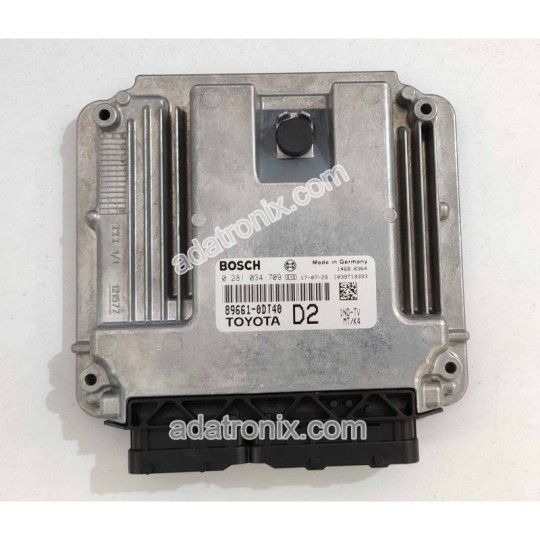
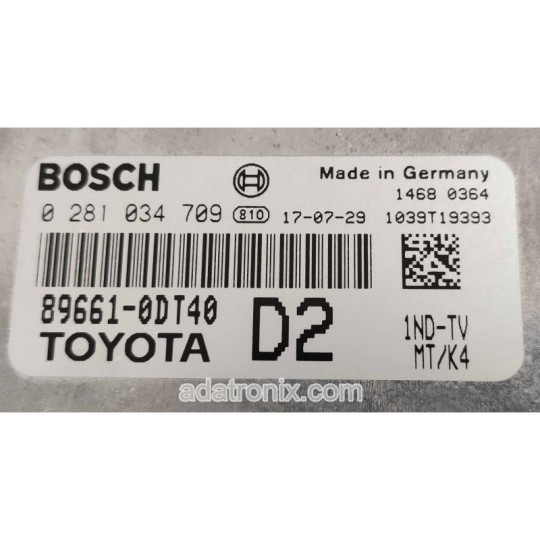
0 281 034 709 BOSCH ECU ENGINE CONTROLLER TOYOTA 89661-0DT40
For more details visit www.adatronix.com
0 notes
Photo
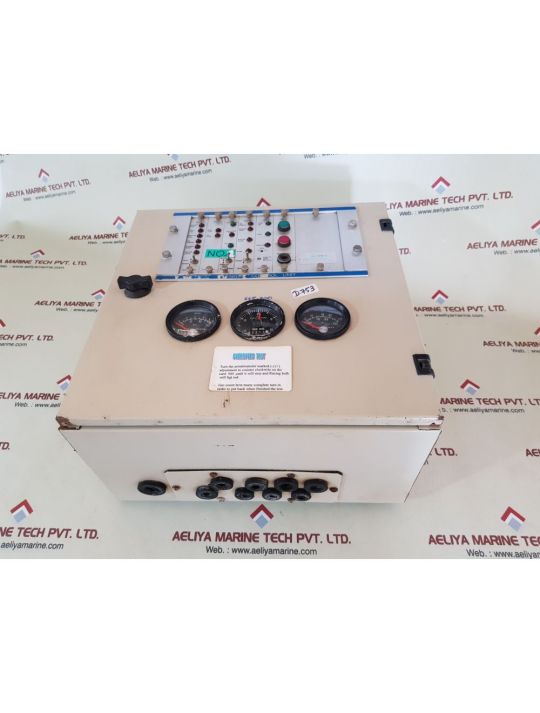
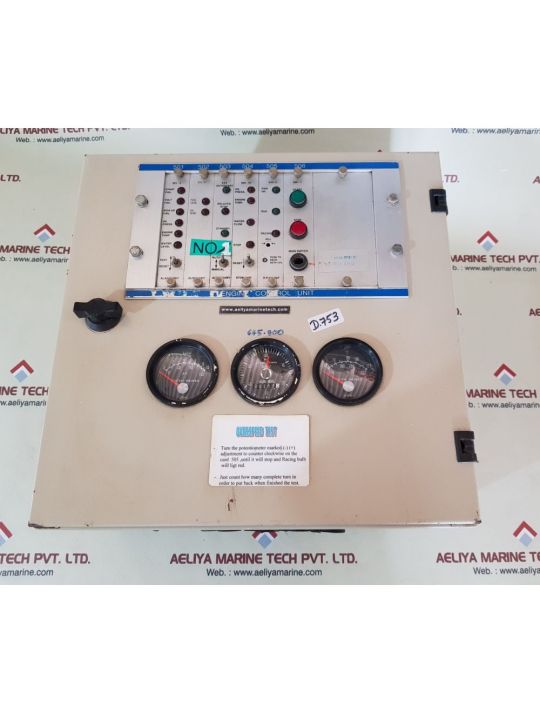
for sell: #Volvo-Pentaenginecontrolunit #enginecontrolunit #auto2mation #automation #marineautomation #shipautomation #industrialautomation #electricautomation #shippart #marinesupply #marineelectronic #shipsupplier #shipmachinery #marinepart #shipmachinery...
0 notes
Text
1997 Corvette manuels $200 | northdakota.allembru.com
0 notes
Text
AEM Fic computer (Minnetonka) $360 | minnesota.allembru.com
0 notes
Text
Hands-on control
November 27, 2023
by dorleco
with no comment
Control Systems
Edit

Introduction
There are a number of features and technologies that can be used to enable hands-on interactions if you’re particularly interested in “hands-on control” for a car. Here are a few instances:
1. Steering Controls:
Use systems for adaptive steering that can be modified in accordance with the user’s preferences and physical capabilities.
Steering Aids: To facilitate steering for users of varying strength levels, incorporate technology such as power steering and variable steering ratio.
2. Throttle and Brake Controls:
Electronic Brake and Throttle: Switch out your old, inflexible mechanical brake and throttle systems with adjustable, sensitive, and responsive electronic controls.
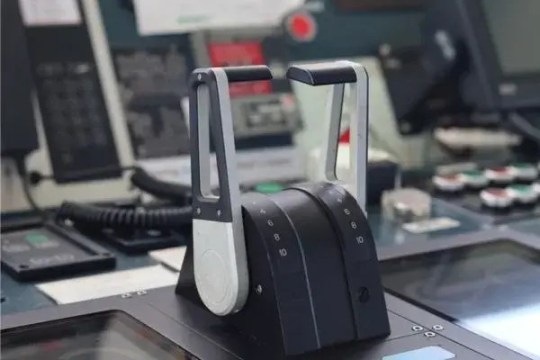
3. Customizable Controls:
Modular controls: Create controls in a way that allows users to add or remove parts according to their own requirements.
Control Sensitivity Adjustment: Allow users to modify the sensitivity of the controls to suit their dexterity and strength levels.
4. Gesture Controls:
Hand Gesture Recognition: By integrating cameras and sensors, this technology can identify hand motions and enable users to manipulate a variety of functions with a simple hand gesture.
Touch-sensitive Surfaces: To facilitate touch-based interactions, add touch-sensitive surfaces to the dashboard or steering wheel.
5. Joystick Controls:
Adaptive Joysticks: Include steering, braking, and accelerating functions with adaptive joystick controls.
Customizable Joystick Inputs: Give customers the option to change the functions that are linked to joystick inputs according to their own tastes.
6. Voice Controls:
Hands-free Commands: Install a strong voice control system so that drivers can operate a number of car systems without lifting their hands.
Voice-Activated Help: Offer voice-activated support for activities such as entertainment, climate control, and navigation.
7. Haptic Feedback:
Integrate haptic feedback into the steering wheel to give users tactile indications regarding the state of the road or navigational instructions.
Feedback for Controls: To improve the user’s awareness of their interactions, give haptic feedback for other controls.
8. Integration of Wearable Technology:
Wearable Controls: Investigate how hand gestures can operate some car functions by integrating wearable technology, such as smart gloves or wristbands.
9. Augmented Reality (AR):

Benefits of Hands-on Control
Hands-on control in vehicles, where the driver actively manipulates physical controls such as steering wheels, pedals, and other interfaces, can offer several benefits:
1. Immediate Response:
Quick Reaction Times: Hands-on controls allow drivers to respond rapidly to changing road conditions, potential hazards, or unexpected events.
2. Enhanced Control:
Fine Motor Skills: Hands-on controls leverage the driver’s fine motor skills, allowing for precise control over steering, acceleration, and braking.
3. Intuitive Interaction:
Natural Interface: Using voice commands or touchscreens is frequently thought to be less intuitive and natural than manipulating physical controls, which makes for a more seamless driving experience.
4. Tactile Feedback:
Sensory Input: Drivers can assess road conditions and vehicle behavior by using tactile feedback from physical controls to make necessary adjustments.
5. Reduced Cognitive Load:
Minimal Distraction: By preventing drivers from having to take their eyes off the road to glance at touchscreens or other interfaces, hands-on controls can lessen cognitive load and improve driver focus.
6. Muscle Memory:
Automated Motions: Drivers get muscle memory for certain motions over time, which makes it simpler to use controls without realizing it.
7. Universal Familiarity:
Common Design: Because many drivers are accustomed to using traditional hands-on controls, switching between different vehicles won’t require them to go through a difficult learning curve.
8. Safety Benefits:
Physical Presence: By keeping the driver physically involved in the driving activity, hands-on controls may lessen the chance of accidents caused by distraction.
9. User Preference:
Personal Comfort: For some drivers, there’s nothing more comfortable or delightful than the tactile sensation of physical controls.
10. Obtainability:
Inclusive Design: By keeping accessibility in mind while designing physical controls, a variety of users—including those with different physical abilities—can be served.
Drawbacks of Benefits of Hands-on Control
Although using hands-on controls has many advantages, there are disadvantages to this conventional method of operating a car. It’s critical to be aware of these constraints in order to fully comprehend the difficulties associated with depending just on manual control systems:
1. Limited Adaptability:
It may be difficult for those with specific physical ailments or disabilities to adjust hands-on controls, which restricts accessibility for a wide variety of drivers.
2. Reduced Automation:
In contrast to more automated systems, adaptive cruise control, and lane-keeping assistance may not be as smoothly incorporated with manual controls.
3. Space and Design Constraints:
Vehicle interiors may be less able to incorporate innovative and ergonomic design elements due to the conventional hands-on control layout.
4. Complexity for Novice Drivers:
Compared to more automated or simplified interfaces, novice drivers may find it difficult to coordinate several hands-on controls, resulting in a higher learning curve.
5. Fatigue and Strain:
Long-term hand-held control usage can lead to physical strain and driving weariness, particularly in congested areas or on lengthy trips.
Risk of Injury: Compared to a fully automated system with fewer projecting or harsh surfaces, a system with physical controls may have a larger risk of injury in the event of a collision.
Reluctance to Change: The broad adoption of increasingly sophisticated and automated driving systems may be hampered by drivers’ reluctance to adopt new technologies.
6. Possibility of Human Error:
With hands-on control systems, mistakes in judgment, reflexes, or coordination could still happen and endanger lives.
7. Space Utilization:
The amount of space taken up by conventional controls may restrict the interior design of the vehicle and have an adverse effect on its overall aesthetic appeal.
8. Maintenance and Wear:

Conclusion:
In conclusion, hands-on control systems in vehicles offer a range of benefits, including immediate response, enhanced control through fine motor skills, intuitive interaction, tactile feedback, and reduced cognitive load. The familiarity of physical controls, muscle memory development, and their widespread acceptance make hands-on systems accessible and comfortable for many drivers. Additionally, the safety benefits of a physically engaged driver and the potential for redundancy in the face of technological failures are notable advantages.
However, hands-on control systems are not without drawbacks. They may pose challenges for individuals with certain physical disabilities, limit adaptability, and resist the full integration of advanced automation features. Issues such as driver fatigue, the potential for injury in collisions, and constraints on design flexibility are also considerations.
The future of vehicle control systems may involve striking a balance between hands-on controls and advanced technologies to harness the benefits of both approaches. Hybrid systems that combine the familiarity of traditional controls with the efficiency and safety features of automation are likely to play a key role in shaping the next generation of vehicles. As technology continues to evolve, addressing the limitations of hands-on controls will contribute to creating more inclusive, adaptable, and user-friendly driving experiences for a diverse range of individuals.
#VehicleDiagnostics#Transmissioncontrol#Dorleco#EngineControlUnit#FuelEfficiency#InternalCombustionEngine#BatteryManagement#autonomousvehicles
0 notes
Text
Vehicle Diagnostics and Communication
November 15, 2023
by dorleco
with no comment
Autonomous Vehicle Technology
Edit

Introduction
A vital component of contemporary automobile technology, Vehicle Communication and Diagnostics are essential for troubleshooting, performance monitoring, and vehicle maintenance. With the development of electronic control systems and the incorporation of advanced technology into automobiles, these systems have undergone substantial evolution. The following are important facets of car diagnostics and communication:
1. OBD (On-Board Diagnostics):
OBD-I and OBD-II: OBD is a standardized system that keeps track of how well an engine and other crucial systems are operating in a car. In the 1980s, OBD-I (first generation) was released, and in the mid-1990s, OBD-II (second generation) became the industry standard. OBD-II is more extensive and has standardized diagnostic connectors and codes.
2. Diagnostic Trouble Codes (DTCs):
Error codes: A Diagnostic Trouble Code (DTC) is produced by a car’s onboard computer when it finds an issue. These codes give technicians information about the particular situation, enabling them to quickly identify and solve issues.
3. Communication Protocols:

Controller Area Network, or CAN bus, is a widely used communication protocol in contemporary cars that enables different electronic control units (ECUs) to talk to one another. It permits effective communication and real-time data sharing amongst various vehicle systems.
4. Scan Tools and Diagnostic Equipment:
OBD-II Scanners: To extract DTCs, monitor live data, and run various diagnostic tests, mechanics and car owners utilize OBD-II scanners. These instruments establish a connection with the car’s OBD-II port to retrieve data from the internal computer.
5. Telematics and Remote Diagnostics:
Telematics Systems: A lot of contemporary cars come with telematics systems installed, which enable remote monitoring and diagnostics. Real-time study of the performance, health, and maintenance requirements of vehicles is made possible by these systems’ ability to send data to a central computer.
6. Manufacturer-Specific Diagnostics:
Systems Exclusive to Manufacturers: Some manufacturers have exclusive diagnostic systems that may surpass OBD-II requirements. For thorough diagnostics on these systems, specific hardware and software are frequently needed.
7. Wireless Transmission:
Bluetooth and Wi-Fi: Some diagnostic equipment connects to a car’s onboard computer through wireless technologies like Bluetooth or Wi-Fi. This makes doing diagnostics more convenient and flexible.
8. Systems for Advanced Driver Assistance (ADAS):
Sensor Diagnostics: Advanced driver assistance systems (ADAS) in modern cars use sensors and cameras to provide functions like automated emergency braking and lane deviation warning. These systems’ diagnostic procedures entail calibrating and keeping an eye on these sensors to ensure peak performance.
8. Online safety:
Security Concerns: As cars become more networked, cybersecurity is getting greater attention. It is imperative to guarantee the security of car communication systems to avert potential cyber threats and unwanted access.
Benefits of Vehicle Communication and Diagnostics
Both car owners and mechanics can profit from vehicle communication and diagnostics in several ways. Here are a few main benefits:
1. Early Issue Detection:
Early identification of possible problems with the vehicle’s systems is made possible by vehicle communication and diagnostics. This makes maintenance proactive and helps stop small faults from growing into larger, more expensive ones.
2. Reduced Downtime:
Vehicle downtime can be decreased with the use of prompt and precise diagnostics. Vehicles spend less time off the road when issues are swiftly identified and fixed, which increases operational efficiency, particularly in commercial fleets.
3. Cost Reductions:
Cost savings might come from identifying and resolving problems early. Car owners can save a lot of money on repairs and replacements by taking care of issues before they worsen. Frequent diagnostics can also help reduce running expenses by improving fuel economy.
4. Enhanced Efficiency:
Diagnostics make sure that every system in the car is running as efficiently as possible, which helps to maximize performance. This covers overall vehicle dynamics, emission control, and engine efficiency. Improved performance can result in more fuel economy and a more comfortable ride.
5. Emission Control and Environmental Impact:
Improved emission control is a result of effective diagnostics. Making sure the car’s emission control systems are operating correctly contributes to both compliance with emission laws and the reduction of hazardous emissions, which benefits the environment.
6. Remote Monitoring and Telematics:
Telematics systems allow for remote monitoring of a vehicle’s performance and health. They are frequently linked with vehicle communication and diagnostics. This is especially useful for fleet management since it enables managers to monitor the state of several cars without having to physically inspect them all.
7. Data-Driven Decision Making:
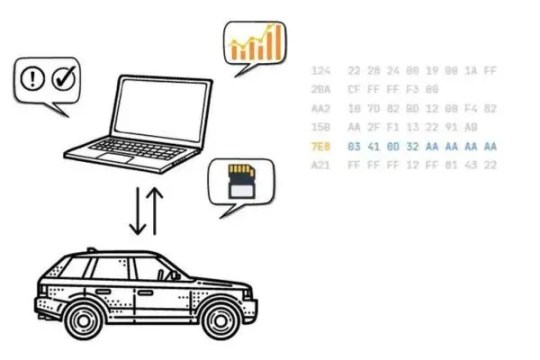
8. Customer Satisfaction:
Customer satisfaction for service personnel is influenced by their ability to diagnose and address problems with accuracy and speed. Owners of vehicles value prompt and effective maintenance, and improved diagnostics can improve the clientele’s overall experience.
Drawbacks of Vehicle Communication and Diagnostics
While there are many advantages to Vehicle Communication and Diagnostics, there are several disadvantages and difficulties as well.
1. Complexity and Technical Expertise:
To diagnose and resolve problems with advanced diagnostics systems, certain technical knowledge is frequently needed. For those lacking the requisite skills or understanding, this intricacy may provide a challenge, resulting in their dependence on qualified mechanics or technicians.
2. Cost of Equipment and Training:
The expense of purchasing high-quality diagnostic instruments can be high, and the cost of educating staff members to use and interpret the tools correctly also increases. For individual car owners or smaller service firms, this might be a substantial expenditure.
3. Issues with Compatibility:
Compatibility issues might occur, particularly with aftermarket parts or in older cars. Certain diagnostic techniques and instruments might not work perfectly with every make and model, which could restrict their use in particular circumstances.
4. Risks to Cybersecurity:
Cybersecurity risks are likely to increase as cars become increasingly networked. Hackers may take advantage of holes in communication systems, endangering data security and vehicle safety. Strong cybersecurity safeguards must be put in place by manufacturers to protect vehicle communication systems.
5. Overreliance on Technology:

6. Privacy Concerns:
Privacy issues are brought up by telematics systems, which are frequently combined with car diagnostics and communication. Constantly tracking a car’s whereabouts and performance may be viewed as an invasion of privacy; therefore, regulations and open lines of communication are needed to allay these worries.
7. Low Ability to Do It Yourself:
Although many customers may obtain OBD-II scanners, more sophisticated diagnostics frequently call for specialized tools and software. This makes it more difficult for car owners to carry out several diagnostic procedures on their own, which increases their dependency on expert services.
8. Rapid Technological Obsolescence:
New technologies are constantly being launched, and the automotive sector is evolving swiftly. Because of this quick rate of invention, diagnostic equipment may become outdated, making it difficult for professionals and repair shops to stay up to date on the newest procedures and instruments.
Conclusion:
In conclusion, vehicle communication and diagnostics are integral components of modern automotive technology, providing a plethora of benefits alongside certain challenges. The evolution from basic OBD-I systems to advanced OBD-II, coupled with telematics and remote monitoring capabilities, has revolutionized how vehicles are maintained and serviced. The advantages include early issue detection, reduced downtime, cost savings, optimized performance, and improved safety. These technologies empower data-driven decision-making, enhance customer satisfaction, and ensure compliance with regulations.
However, challenges such as the complexity of diagnostic systems, the associated cost of equipment and training, compatibility issues, and cybersecurity risks underscore the need for ongoing industry attention. Privacy concerns, limited do-it-yourself capabilities for advanced diagnostics, and the potential for rapid technological obsolescence further emphasize the dynamic nature of this field.
As the automotive industry continues to innovate, addressing these challenges through standardization, improved cybersecurity measures, and accessible training will be crucial. Striking a balance between leveraging the advantages of vehicle communication and diagnostics and mitigating potential drawbacks will contribute to a more efficient, safe, and sustainable automotive ecosystem. The future holds promise for continued advancements, ensuring that vehicles remain connected, well-maintained, and capable of meeting the evolving needs of both consumers and the automotive industry as a whole.
#VehicleDiagnostics#Communication#Dorleco#EngineControlUnit#FuelEfficiency#InternalCombustionEngine#BatteryManagement#autonomousvehicles
0 notes
Text
Powertrain Design- An Overview
November 10, 2023
by dorleco
with no comment
Autonomous Vehicle Technology
Edit
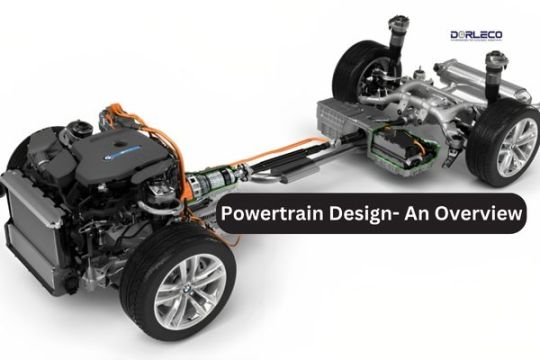
Introduction
The process of creating and refining the parts and mechanisms in a car that are in charge of producing and transferring power is known as powertrain design. Any vehicle’s powertrain plays a crucial role in determining its overall operation, performance, fuel economy, and emissions. An outline of the powertrain design is provided here:
1. Components of a Powertrain:
Engine: The powertrain’s engine is its central component. By burning fuel and turning it into mechanical energy, it produces power.
Transmission: Power is distributed from the engine to the wheels by the transmission system. It has many gears to regulate torque and speed.
Driveline: This system transfers power from the transmission to the wheels and is made up of parts like axles, differentials, and driveshaft.
Exhaust System: Consists of parts like mufflers and catalytic converters and is in charge of diverting exhaust gases away from the engine and vehicle.
Engine Control Unit (ECU): Known as the “brain” of the powertrain, the ECU regulates emissions, fuel injection, and ignition timing, among other elements of engine functioning.
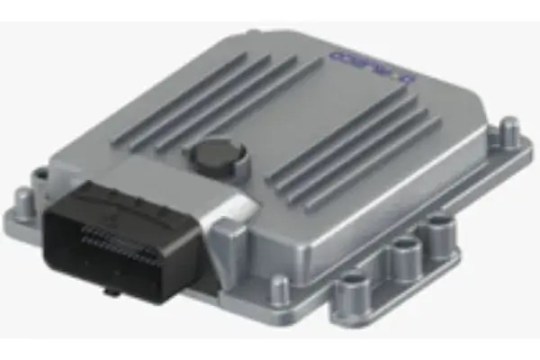
2. Design Points to Remember:
Performance: To achieve the desired performance characteristics of the vehicle, the powertrain design strives to maximize the balance between power, torque, and fuel efficiency.
Fuel Efficiency: To cut emissions and running expenses, engineers work to improve the fuel efficiency of powertrains.
Emissions: A key consideration in powertrain design is adhering to emissions standards. This entails adhering to legal requirements and reducing emissions like NOx and CO2.
Durability: Powertrains need to be made strong enough to endure frequent use strains and continue to be dependable over time.
Packaging: To fit all powertrain components, efficient use of space is crucial, particularly in small cars.
3. Powertrain Types:
Internal Combustion Engine (ICE): Fuelled by gasoline or diesel, internal combustion engines power the majority of automobiles.
Hybrid: For increased efficiency, hybrid powertrains integrate an internal combustion engine, an electric motor, and a battery.
Electric: Fully electric cars have no internal combustion engines; instead, they run on electric motors that are fuelled by batteries.
Plug-in hybrid cars: These cars have a bigger battery that can be charged externally and an internal combustion engine.

4. Advancements in Powertrain Design:
Powertrain components are now lighter and more efficient because of developments in manufacturing techniques and materials.
The lowered environmental impact of electric and hybrid drivetrains has led to their increasing popularity.
To incorporate these new features, advanced driver assistance systems (ADAS) and autonomous driving technologies are affecting powertrain design.
Applications of powertrain design
Within the automotive and transportation sectors, powertrain design fulfills numerous vital roles and uses. The following are some important applications and uses of powertrain design:
Vehicle Propulsion: The primary source of the power and torque required to drive a vehicle is the powertrain architecture. It consists of the drivetrain, engine, and transmission parts that send power to the wheels so the car may move forward or backward.
Optimizing Performance: A vehicle’s speed, acceleration, and towing capacity can all be improved with the help of powertrain design. Powertrains for high-performance cars, in particular, must be carefully engineered to provide optimal performance.
Fuel Efficiency: When designing a powertrain, fuel economy is quite important. To minimize fuel consumption and raise the miles per gallon (MPG) of internal combustion engine (ICE) vehicles, engineers strive to optimize the energy conversion efficiency of the powertrain.
Emissions Control: One of the most important aspects of vehicle emissions control is powertrain design. Engineers strive to minimize dangerous pollutants and adhere to strict emissions rules by streamlining combustion processes and implementing emission control systems.
Electric and Hybrid Vehicles: As electric and hybrid vehicles have become more popular, electric motors, batteries, and hybrid systems have become more common components of powertrain design. Maximizing electric range, energy efficiency, and regenerative braking capabilities are the goals of these systems.
Adaptive and Autonomous Vehicles: Technologies about adaptive and autonomous vehicles include powertrain design. To combine advanced driver-assistance systems (ADAS) and autonomous capabilities, these cars might need unique powertrains.
Customization for Different Vehicle Types: The design of a powertrain can be altered to fit a variety of vehicles, such as buses, Lorries, motorbikes, passenger cars, and even recreational vehicles. Every type of vehicle has specific needs for its powertrain to fulfill its intended function.
Sustainability and Environmental Considerations: The development of environmentally friendly and sustainable automobiles depends heavily on powertrain design. The goals of engineers are to move toward electric and hydrogen fuel cell technologies, decrease carbon emissions, and increase fuel efficiency.
Challenges faced during powertrain design
The process of designing a powertrain requires combining many different parts and systems to produce a dependable and efficient power source for automobiles, which makes it difficult and complex. When designing a powertrain, engineers, and designers must overcome several obstacles. Among the principal difficulties are:
Emissions and Environmental Laws: One of the main issues in powertrain design is adhering to strict emissions requirements and environmental laws. It’s difficult to reduce dangerous emissions like NOx and CO2 while still operating at peak effectiveness and performance.
Fuel Efficiency: It’s a continuous challenge to design powertrains that achieve excellent fuel efficiency without sacrificing performance. Reducing operating expenses and environmental effects requires fuel economy.
Electrification: As electric and hybrid cars become more and more common, combining electric drivetrains, batteries, and related components is a complex process that calls for specific design expertise.
Component Integration: To guarantee effective power transfer and decreased friction losses, the engine, gearbox, exhaust system, and driveline must all be coordinated with precision.
Advanced Materials and Manufacturing: Using advanced materials and manufacturing techniques, such as additive manufacturing, lightweight metals, and composites, might provide budgetary and operational difficulties.
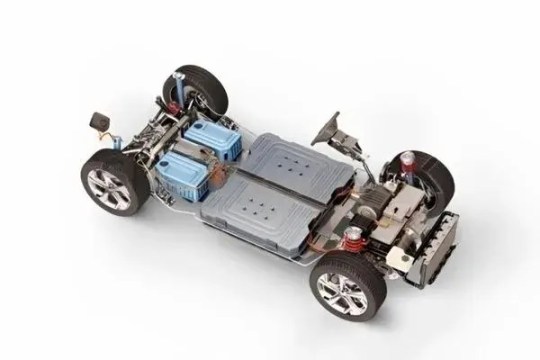
Supply Chain and Budgetary Restrictions: Obtaining parts and supplies while keeping costs down is a big task. Furthermore, changes in commodity prices may have an impact on how affordable powertrain components are.
Adaptation to New Technologies: Powertrain design must keep up with the rapid advancements in technology, such as connectivity, electrification, and autonomous driving features.
Adherence to Safety Standards: Observing safety rules poses extra difficulties and needs to be taken into account, particularly when it comes to electric powertrains with high-voltage systems.
Conclusion:
In conclusion, powertrain design is a pivotal aspect of the automotive and transportation industries, influencing the performance, efficiency, and environmental impact of vehicles. It encompasses a wide range of components and systems, including engines, transmissions, drivetrains, and emissions control, each contributing to the overall function and character of a vehicle.
The importance of powertrain design lies in its ability to address key challenges, such as meeting stringent emissions standards, improving fuel efficiency, and adapting to the ever-evolving landscape of electric and hybrid technologies. It also plays a crucial role in enhancing performance, reducing noise and vibration, and ensuring the reliability and safety of vehicles.
As the automotive industry continues to evolve, with advancements in electrification, autonomous driving, and sustainability, powertrain design will remain at the forefront of innovation. Engineers and designers will face ongoing challenges and opportunities to create powertrains that meet the needs of consumers, comply with regulations, and contribute to a more sustainable and efficient future of transportation. Whether it’s through the development of electric powertrains, hybrid systems, or advancements in internal combustion engines, powertrain design will play a central role in shaping the vehicles we drive and ride in for years to come.
#PowertrainDesign#Dorleco#EngineControlUnit#FuelEfficiency#InternalCombustionEngine#BatteryManagement#autonomousvehicles
1 note
·
View note
Text
David Car Computer ( repair ecu mobil ) wa/tlp 0895636699490

#greatcorolla#allnewcorolla#ecugreatcorolla#serviceecucorolla#ecugreat#serviceecu#repairecu#ecuservice#ecu#enginecontrolunit#ecumobil
0 notes
Text
DCC Fahri ecu ( wa/tlp 0895636699490 )

#komputermobil#serviceecumobil#serviceecujakartaselatan#ecumobil#enginecontrolunit#ecuservice#ecurepair#electrikalmobil#majalahmobil#otoplus#kamisukaturbo#fahriecu#dcc
0 notes
Text
DCC Repair ecu car ( wa/tlp 0895636699490 )
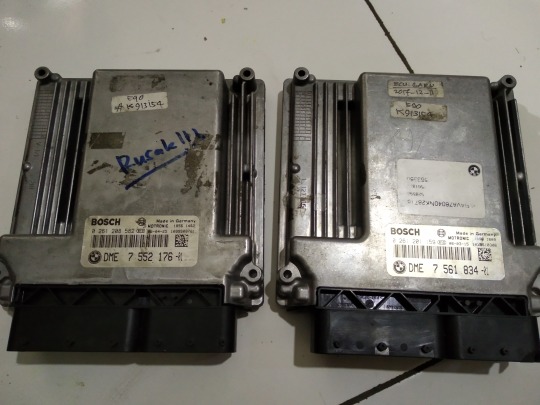
#bmw#ecubmw#ecurepair#serviceecu#repairecu#serviceecumobil#kelistrikan#electrikal#enginecontrolunit#ecumobil#mobilindonesia#serviceecudcc#serviceecudcc2#kamisukaturbo#fahriecu#dcc
0 notes